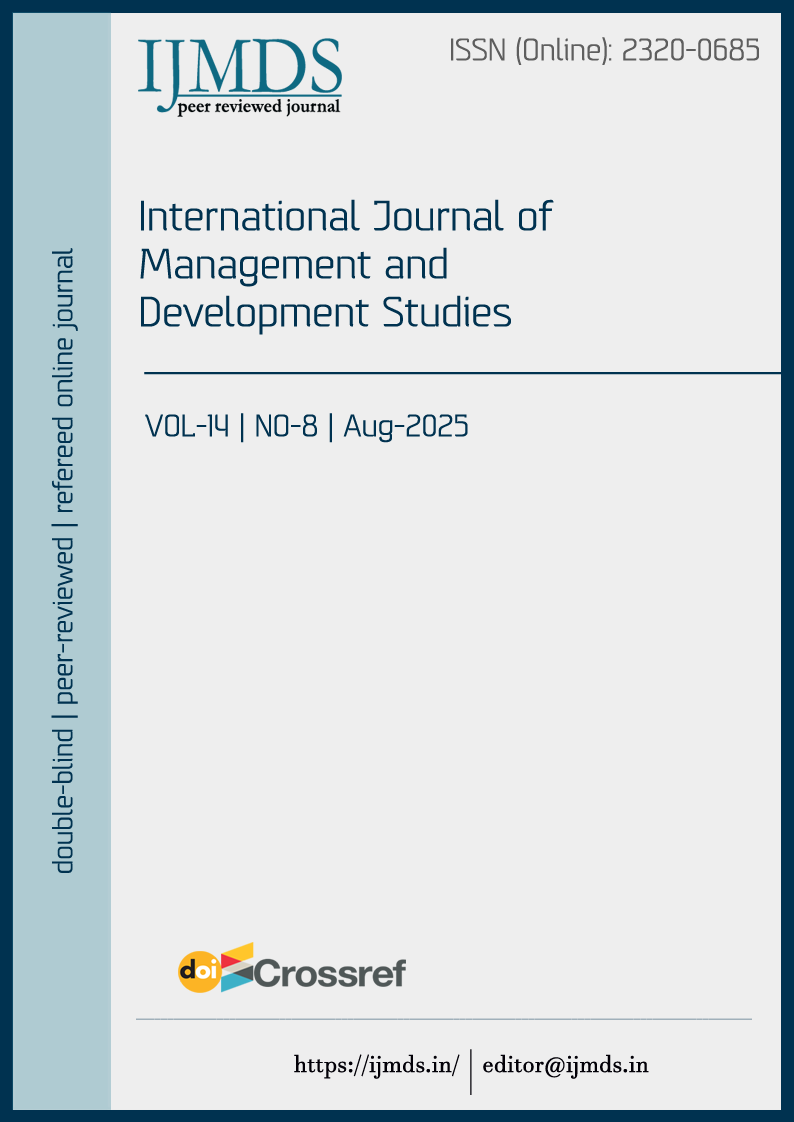Health Conditions of Working Women: A Sociological Analysis
DOI:
https://doi.org/10.53983/ijmds.v14n8.014Keywords:
Working Women, Health Conditions, Gender Inequality, Work-Life Balance, Occupational HealthAbstract
The increasing participation of women in the global workforce has brought significant economic and social benefits, yet it concurrently exposes a critical, often overlooked dimension: the unique and often adverse health conditions experienced by working women. This analytical paper adopts a sociological lens to explore how intersecting social structures, cultural norms, and workplace dynamics profoundly shape women's physical and mental health. Drawing on theoretical frameworks such as feminist theories, role strain theory, and the social determinants of health, we argue that gender inequality, occupational hazards, work-life imbalance, and inadequate social support systems are primary drivers of these health disparities. The paper examines the manifestations of these conditions, including stress-related illnesses, musculoskeletal disorders, reproductive health issues, and mental health challenges. Understanding these complex interrelations is crucial for developing targeted interventions and policies that promote healthier, more equitable working environments for women and foster overall societal well-being.
Downloads
References
Artazcoz, L., Borrell, C., & Travier, N. (2007). Socioeconomic factors and the double burden of women's roles: Their influence on health. European Journal of Public Health, 17(2), 196-202.
Blau, F. D., & Kahn, L. M. (2017). The gender wage gap: Extent, trends, and explanations. Journal of Economic Literature, 55(3), 789-865.
Crenshaw, K. (1989). Demarginalizing the intersection of race and sex: A black feminist critique of antidiscrimination doctrine, feminist theory and antiracist politics. University of Chicago Legal Forum, 1989(1), 139-167.
Doyal, L. (2000). Gender and health: Women's health. In F. M. M. S. A. H. Ritenbaugh (Ed.), Encyclopedia of Women & Gender (Vol. 1, pp. 497-508). Academic Press.
Eurofound. (2017). Sixth European Working Conditions Survey–Overview report. Publications Office of the European Union.
Goode, W. J. (1960). A theory of role strain. American Sociological Review, 25(4), 483-496.
Hochschild, A. (1989). The second shift: Working parents and the revolution at home. Viking.
Link, B. G., & Phelan, J. (1995). Social conditions as fundamental causes of disease. Journal of Health and Social Behaviour, 36(Extra Issue), 80-94.
Söderström, M., Säfsten, K., & Larsson, M. (2017). Burnout and engagement among healthcare workers: A cross-sectional study. Scandinavian Journal of Caring Sciences, 31(3), 594-601.
Tong, R. (2018). Feminist thought: A more comprehensive introduction. Routledge.
UN Women. (2023). Progress on the Sustainable Development Goals: The gender snapshot 2023. United Nations.
Williams, J. C., Blair-Loy, M., & Berdahl, J. L. (2013). Cultural schemas, social class, and the flexibility stigma. Journal of Vocational Behaviour, 83(3), 360-372.

